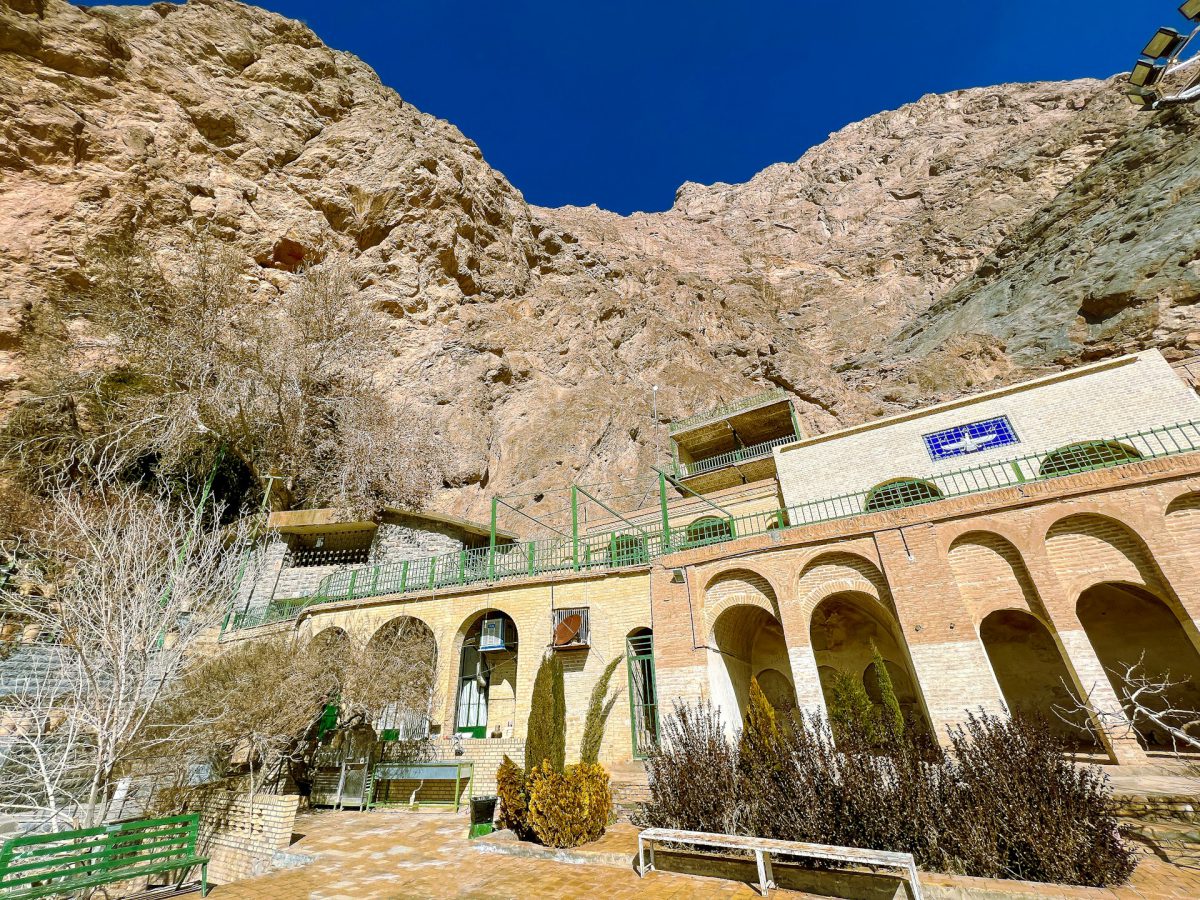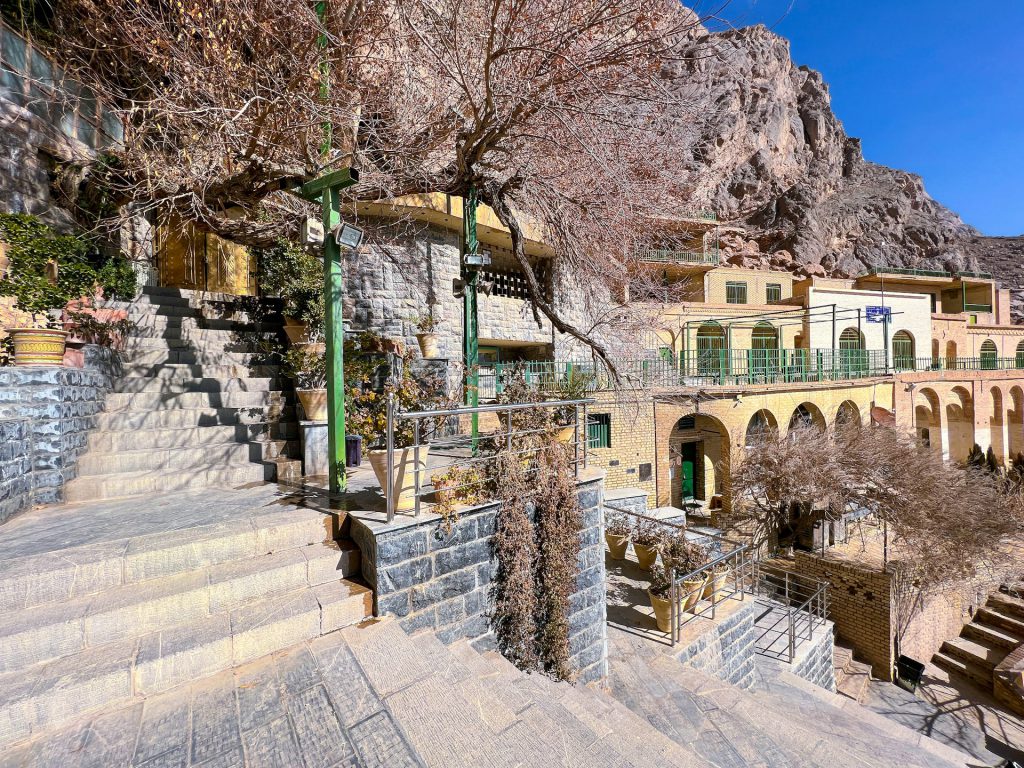Table of Contents
Located in the rugged mountains near Ardakan Town, the Chak Chak Zoroastrian Temple, also known as Pir-e Sabz Shrine, has a history of over 1400 years. This important site is not just a physical place but holds deep spiritual meaning for Zoroastrians around the world. Surrounded by stunning natural scenery, the temple attracts pilgrims who want to connect with ancient traditions and stories. The legends and mysteries of the temple’s past continue to captivate visitors, offering a glimpse into a world where faith and history meet.
Every year, as the faithful ascend the steep path leading to the shrine, they carry with them the weight of centuries-old beliefs and the hope of spiritual renewal. The temple’s enduring appeal lies in its ability to transcend time, inviting those who visit to immerse themselves in the rich tapestry of Zoroastrian culture. Chak Chak is more than just a shrine; it’s a living testament to the resilience of a faith that has withstood the test of time, its stories and traditions kept alive by those who continue to be drawn to its sacred flame.
History of Chak Chak Zoroastrian Temple
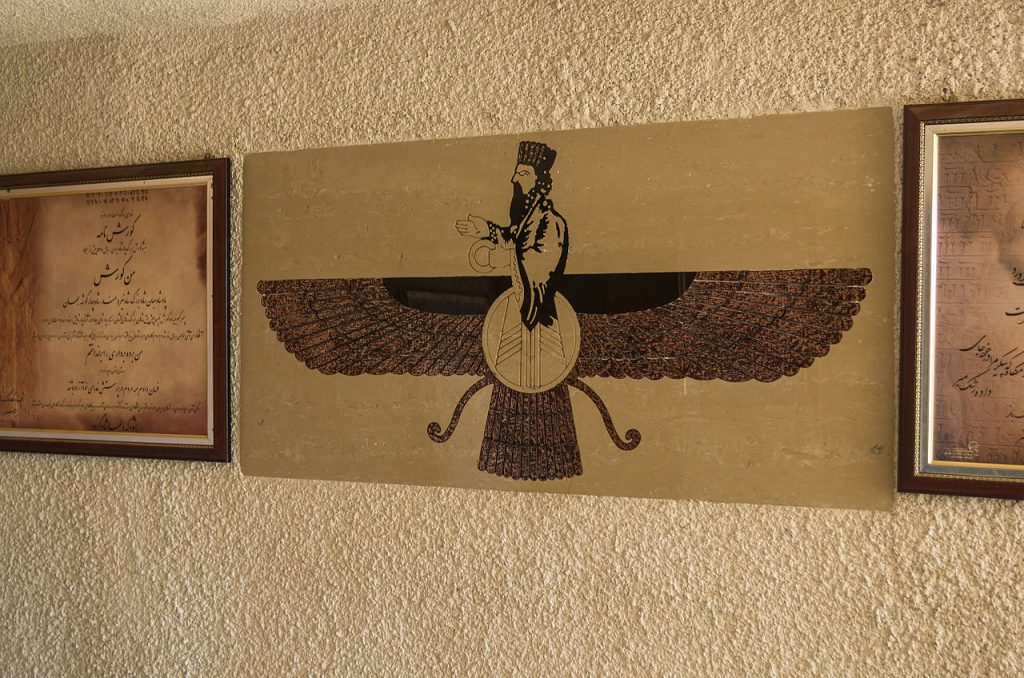
The exact history of Chak Chak Zoroastrian Temple remains shrouded in mystery, with historians and religious scholars still debating its origins. However, an inscription at the shrine’s entrance, courtesy of Mr. Rostam Belivani, the former head of the Sharifabad Yazd Zoroastrian Association, provides a summary of its history.
According to the legend, during the Arab invasion and the fall of the Sassanian dynasty, Yazdegerd III, the last Sassanian king, sought refuge in Yazd with his family. His daughters, including Nikbanou, fled to the surrounding areas. As the story goes, Nikbanou sought shelter in the Chak Chak mountain from her pursuers. In her moment of desperation, she prayed to Ahura Mazda, who responded by miraculously opening the mountain to conceal her. The continuous dripping of water from the rocks is said to represent her tears, a haunting reminder of her plight and the fall of pre-Islamic Persia.
Today, Chak Chak serves as a sacred site for Zoroastrians, rooted in the religion of Iranians during the Sassanian era when Zoroastrianism was the official religion. The shrine holds a special place for Zoroastrians due to their involvement in its construction and maintenance.
Each year from June 14 to 18, thousands of Zoroastrians from Iran, India, and other countries gather at Chak Chak to perform annual rituals, including praying, baking and sharing traditional bread, reading Avesta (religious texts), lighting fires and candles, and singing hymns. This annual ritual is one of the most important gatherings of the Zoroastrians in the world and is similar to the Hajj ritual of Muslims.
Architecture of Chak Chak Zoroastrian Temple
Perched on a rocky cliff, this Zoroastrian temple captivates visitors with its unique architecture, which harmoniously integrates with the natural environment.
The shrine is built around a cave, featuring five uneven levels connected by staircases, each revealing intricate designs and inscriptions from the Avesta, the sacred texts of Zoroastrianism. The entrance boasts grand bronze doors, leading into a dimly lit chamber where the walls are darkened by the eternal flames that symbolize the divine. The temple’s most enchanting feature is the constant dripping of water from the ceiling, which nourishes an ancient plane tree and other flora, creating a lush oasis in the desert. This unique interplay of fire and water embodies the Zoroastrian belief in the balance of nature and the divine.
Name of Chak Chak Zoroastrian Temple
The name “Chak Chak” derives from the Persian phrase meaning “drip drip,” a reference to the gentle sound of water that trickles down from the cliffs into the temple. This unique feature is not merely an auditory delight; it symbolizes the purity and light that water represents in Zoroastrianism.
Historically, Iranians have built their temples near flowing water, and Chak Chak Fire Temple exemplifies this tradition. Nestled within the mountains, the temple is blessed with a natural spring that continuously flows, creating a serene atmosphere that enhances its sacredness. Visitors can hear the soothing sound of water as it cascades, reinforcing the temple’s connection to the divine.
Religious Importance of Chak Chak Zoroastrian Temple
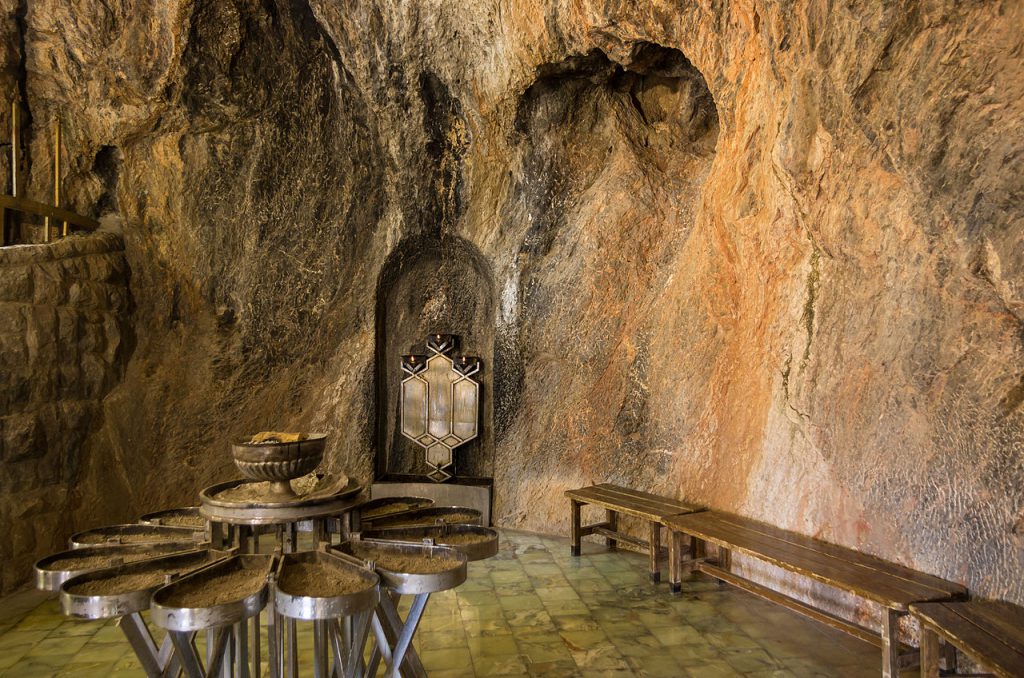
The temple hosts significant gatherings, particularly during the annual pilgrimage from June 14th to 17th, when Zoroastrians from around the globe converge to partake in communal prayers, rituals, and celebrations. This event, often referred to as the Zoroastrian Hajj, includes the reading of sacred texts, lighting of candles, and the sharing of traditional meals, reinforcing the bonds among followers. The rituals performed here are steeped in tradition, emphasizing the importance of community and spiritual connection. As pilgrims ascend the temple’s stairs, they are greeted by inscriptions from the Avesta, reminding them of their faith’s core teachings. This sacred space, with its rich history and vibrant communal practices, continues to be a cornerstone of Zoroastrian identity and spirituality.
Mehregan Festival
The Mehregan festival, a vibrant celebration of autumn and the god of light, Mithra, transforms Chak Chak Temple into a lively hub of joy and unity among Zoroastrians. Over six days, pilgrims don their finest purple garments, symbolizing spirituality and connection to the divine, as they gather to engage in traditional dances, prayers, and communal feasts. This festival not only honors the changing seasons but also reinforces the bonds of community, as families and friends come together to celebrate their shared heritage. The atmosphere is filled with laughter, music, and the rhythmic sounds of celebration, creating a sense of belonging that resonates deeply within the hearts of the attendees.
A particularly poignant aspect of the Mehregan festivities is the special day of Sizdah Be-dar, exclusively reserved for Zoroastrian followers. On this day, the temple’s sacred grounds become a sanctuary for rituals and blessings, marking a significant moment in the lives of many. Newlyweds often visit the shrine to seek divine favor as they embark on their journey together, mirroring practices seen in various faiths where sacred sites play a pivotal role in life’s milestones. This intertwining of cultural traditions and spiritual practices at Chak Chak underscores its importance as a cornerstone of Zoroastrian identity, where the past and present converge in a celebration of faith and community.
How to Get to Chak Chak Zoroastrian Temple
The most convenient route to Chak Chak starts from the UNESCO World Heritage city of Yazd.
Many travelers embark on this journey from Yazd, making it an easy 100 km drive that takes about 1.5 hours. For those exploring the central Desert of Iran, Chak Chak offers a fascinating detour. Additionally, if you’re traveling from Isfahan to Yazd, a stop at Chak Chak along the way provides an enriching experience, seamlessly blending with your desert journey.
Best Time to Visit Chak Chak Zoroastrian Temple
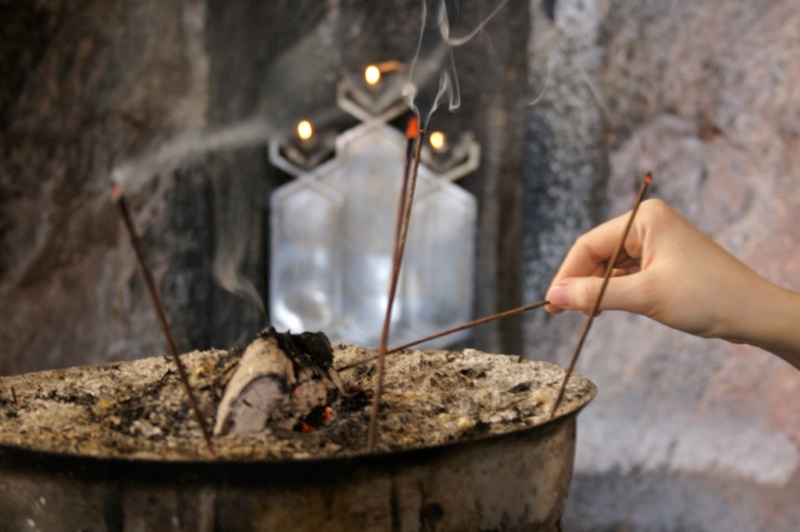
The cooler months of autumn, particularly October and November, along with the mild days of spring in April and May, are the most comfortable times to explore Chak Chak.
The desert climate makes climbing the 360 steps a daunting task during the hotter months, so these seasons offer a more pleasant experience. It’s also wise to steer clear of religious events unless you have an invitation, as the site can become quite crowded during these times.
FAQs about Chak Chak Zoroastrian Temple
Q1: What is the story of Chak Chak?
A1: In Zoroastrian belief, Chak Chak is where Nikbanou, the second daughter of Yazdegerd III, the last Persian ruler before Islam, was trapped by the Arab army in 640 CE. Afraid of being captured, Nikbanou prayed to Ahura Mazda for protection from her enemies.
Q2: Where is Chak Chak from?
A2: Chak-chak is a popular fried dough treat in Tatarstan and Bashkortostan. It’s made from unleavened dough shaped into small, hazelnut-sized balls, which are then deep-fried in oil. Sometimes, hazelnuts or dried fruits like apricots and raisins are added to the mix.
Q3: What is the most famous Zoroastrian temple?
A3: The most famous Zoroastrian temple is the Fire Temple of Yazd.
Q4: Can you visit a Zoroastrian temple?
A4: Only Zoroastrians are allowed in the area where the fire is kept, while non-Zoroastrians can only view it from outside the glass chamber.
Q5: Where are most Zoroastrians in Iran?
A5: The Zoroastrian people of Iran have less than 25,000 members today. Most of them live in the city of Tehran, and the rest live in the cities of Yazd and Kerman. There are also small groups of Zoroastrians, each with 100-300 people, living in the cities of Shiraz, Isfahan, and Ahvaz.
Last Words: Explore the Best of Chak Chak Zoroastrian Temple with a Customized Tour
Nestled in the rugged mountains near Ardakan Town, the Chak Chak Zoroastrian Temple, also known as Pir-e Sabz Shrine, holds over 1400 years of history. This sacred site is not just a physical landmark but a beacon of spiritual significance for Zoroastrians worldwide. The temple, surrounded by awe-inspiring natural beauty, draws pilgrims who seek to connect with the ancient traditions and stories that echo through its walls. The mysteries and legends intertwined with the temple’s past continue to fascinate visitors, offering a glimpse into a world where faith and history converge.
If you’re eager to explore the captivating Chak Chak Zoroastrian Temple, a customized tour to Iran is the way to go. To Iran Tour, a leading provider of Iran tours and travel packages, specializes in crafting bespoke journeys that allow travelers to delve into the rich cultural heritage and stunning landscapes of Iran. Our team of experienced professionals works closely with each client to design an Iran Tours plan that caters to their unique needs, whether it’s a solo adventure, a family vacation, or a group expedition.
So, if you’re ready to embark on a transformative adventure and immerse yourself in the captivating Chak Chak Zoroastrian Temple, let ToIranTour be your guide. We are here to help you create a travel experience that will leave a lasting impression on your heart and mind.

